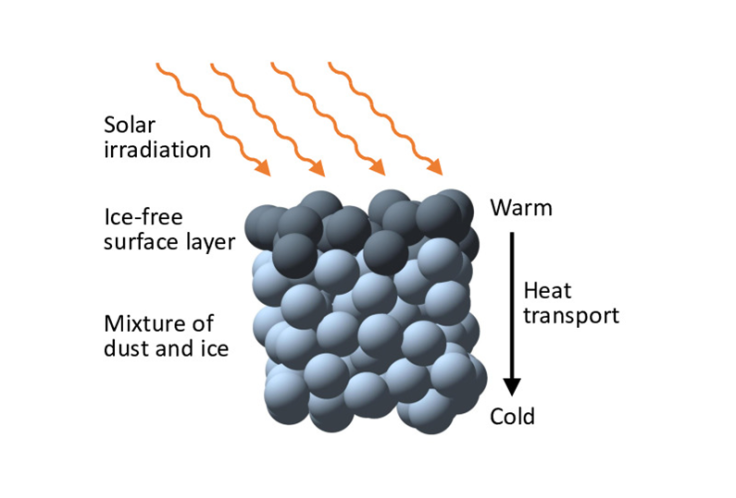Missing Link In Planet Formation Theory Revealed By Comet 67P/Churyumov-Gerasimenko Rosetta Mission

The discovery of exoplanets — planets outside our solar system, orbiting other stars — led scientists to conclude that the process of planetary formation must be more or less the same everywhere in the universe. While most of that process has been theorized, with the actions behind it well-understood, the missing second step of the three-part process has finally been resolved, researchers announced Wednesday.
The microscopic particles of dust from the debris disk around young stars coalesce together, with help from tiny ice particles, to form pebbles. Large aggregates of these pebbles are called planetesimals, and a number of these bodies — which range from one to a few kilometers (miles) in size — come together to form planetary cores. But how the dust pebbles joined together to form these asteroid-sized bodies was not understood.
This was because the pebbles floating in the gas of the debris disk would be dragged by the gas toward the central star, which would destroy them, leaving no matter for the formation of planetesimals. Even if the pebbles or grains were to collide to form larger bodies that could resist the drag, there was a chance that the collisions would produce more fragments instead.
Data collected from comet 67P/Churyumov-Gerasimenko (Chury) by the Rosetta mission helped scientists explain the intervening stage between the formation of pebbles and planetesimals. A research team led by Jürgen Blum from Technische Universität Braunschweig, Germany, published its analysis in a paper Wednesday in the journal Monthly Notices of the Royal Astronomical Society.
"Our results show that only a single model for the formation of larger solid bodies in the young solar system may be considered for Chury. According to this formation model, 'dust pebbles' are concentrated so strongly by an instability in the solar nebula that their joint gravitational force ultimately leads to a collapse," Blum said in a statement.
He explained further: "Although it sounds very dramatic, it’s actually a gentle process in which the dust agglomerates are not destroyed, but are combined into a larger body with an even greater gravitational attraction — the accumulation of the dust agglomerates into a coherent body is virtually the birth of the comet."

Chury, like other comets of its kind, formed in the outer regions of the solar system about 4.5 billion years ago. Its relatively small mass allowed the pebbles in it to survive till today, the statement said.
"This formation scenario leads to a cometary make-up that is simultaneously compatible with the global porosity, homogeneity, tensile strength, thermal inertia, vertical temperature profiles, sizes and porosities of emitted dust, and the steep increase in water-vapor production rate with decreasing heliocentric distance, measured by the instruments on-board the Rosetta spacecraft and the Philae lander,” according to the paper titled "Evidence for the formation of comet 67P/Churyumov-Gerasimenko through gravitational collapse of a bound clump of pebbles."
How the solar system and its planets evolved was one of the main scientific objectives of the Rosetta mission. The European Space Agency-built spacecraft was launched March 2, 2004, and it reached its destination Aug. 6, 2014. Its lander Philae successfully landed on the comet Nov. 12 the same year, but was damaged during the landing. The mission ended Sept. 30, 2016, when the spacecraft maneuvered to crash into the comet.
© Copyright IBTimes 2025. All rights reserved.





















